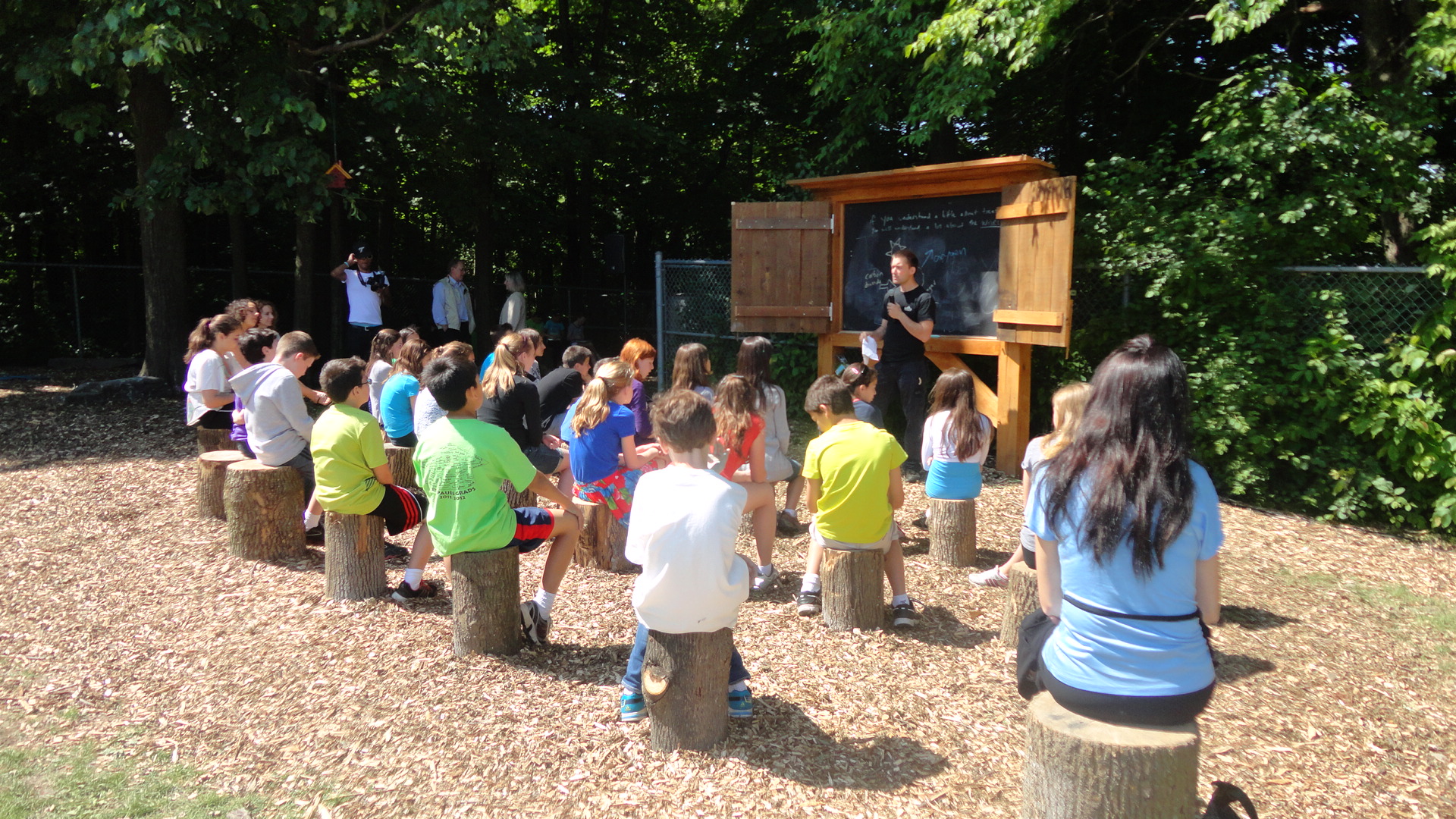Should ILS Go Outdoors?
Immaculata-La Salle’s campus has beautiful unexplored potential outside the classroom.
March 24, 2023
Are traditional classrooms the best place to learn? The same old scenery or greenery? As an ILS student, I will discuss whether or not classes should have a different ambiance and whether or not that has any benefits.

Rows of desks, unflattering lighting, whiteboards and/or touch boards, and a colorless ambiance characterize traditional classrooms. Students must go to the same rooms every day and are not exposed to a variety of environments. This pattern has an impact on how students learn. For this reason, many schools have incorporated outdoor classes into their curriculums for good benefits, both for teachers and students.
- Connection with nature and the outside world: Being outside in general has many advantages, such as fitness. One benefit you may not have realized is that it can improve sleep quality because exposure to natural light and fresh air regulates the body’s natural sleep-wake cycle. In general, it’s a great way to appreciate nature’s reality rather than staring at a screen all day.
- Change of scenery: Taking a break from being cooped up all day is essential; there is a reason why people advise not staying in your room all day. A change of scenery can be enjoyable or engaging in new ways to learn, whether it is hands-on or experiential learning. If the English class is reading a book, why not read it outside if the weather is nice? Consider using nature as an experiment in science classes such as biology or environmental science. Simple things can be turned into a creative project for students to increase their productivity.

Outdoor-Classrooms
These reasons can provide a greater level of concentration. Being outside can help reduce stress and anxiety, but it can also be used to simply refresh someone’s mind and boost a student’s energy levels. This could even be a 5-minute break from class so they are ready to learn when they return.
This is extremely beneficial to teachers because it allows students to avoid leaving the classroom for long periods of time while remaining productive when they return. Lowering students’ stress levels will result in higher grades, and teachers will be much happier to see their students improve and have a better attention span. Teachers will see improved retention and understanding of information if they incorporate hands-on or experiential learning.
Personally, I don’t endorse doing this on a daily basis, but doing it at least once or twice a month could have a significant impact. This shift in atmosphere is significant. This also serves as a reminder of La Salle’s lovely campus. La Salle has the bay and even a short forest walk. I know some teachers have already implemented this in classes such as journalism, photography, LTV, Environmental Science, Marine Biology, and physical education, so why can’t we make it the norm?
What’s your take? As a teacher or a student, you should reflect on what type of environment brings out your best self. Change is always good and especially those changes that will lead to increased productivity.


























